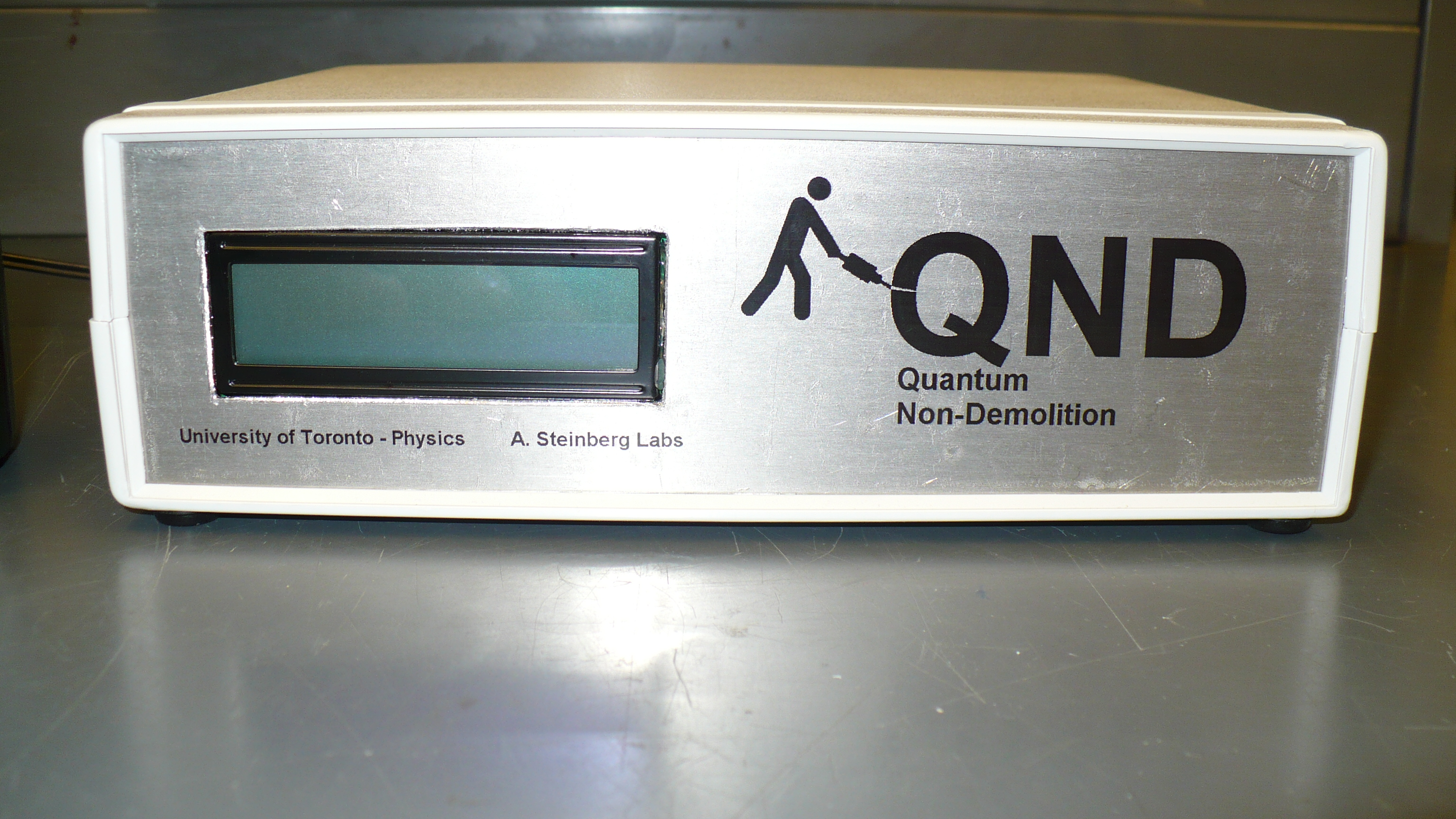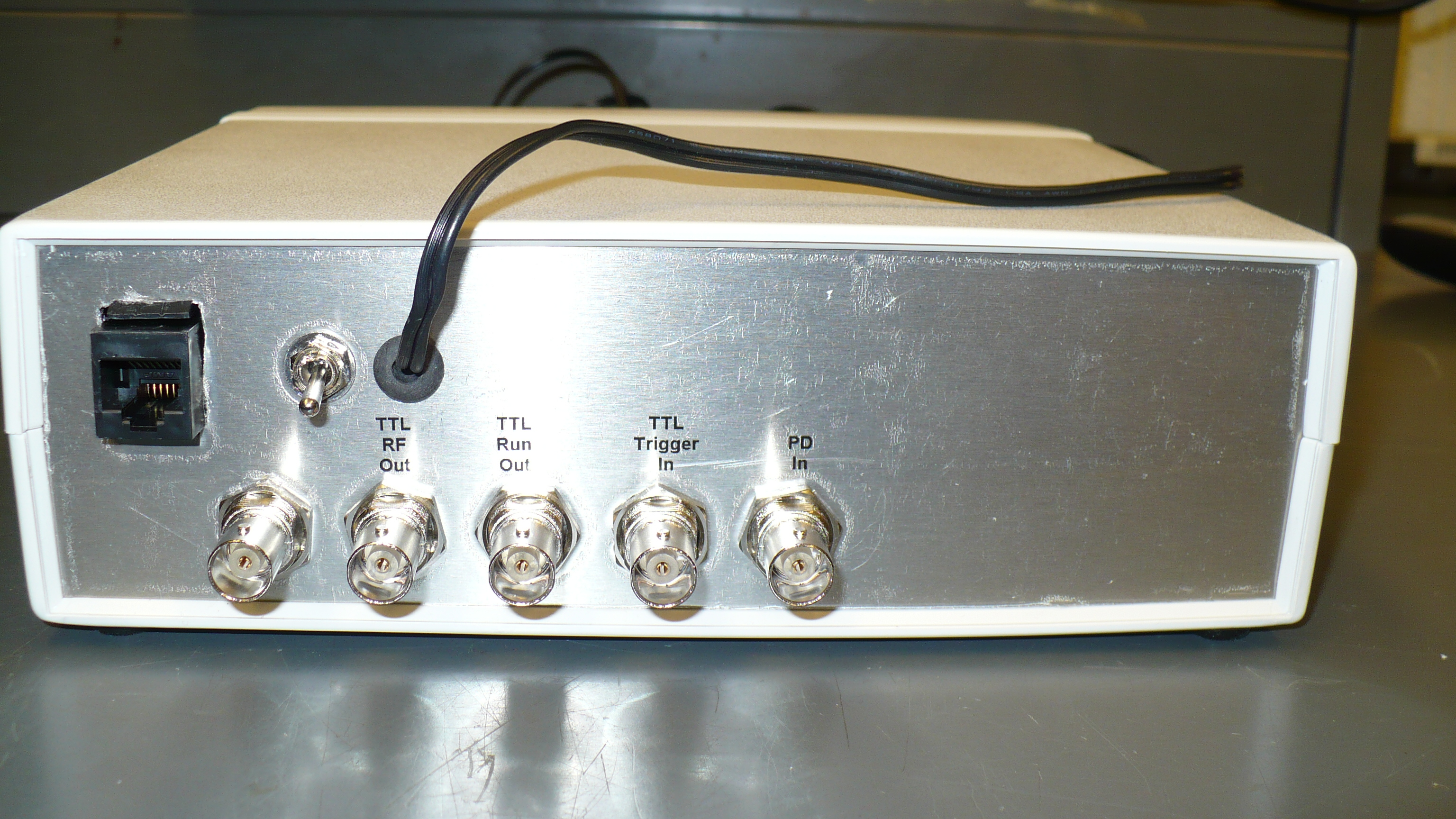

|
 Alan Stummer
Alan Stummer
Research Lab Technologist |
QND Measurement of Photons
(Quantum Non-Demolition)


|
||
Downloads
|
I am curious who uses what. Are these webpages a waste of time, or are they any help to others? Are the circuits, software and utilities appearing in other labs? Please send your comments or suggestions or what you have used (or not) or schematics of your version or pictures or anything! Email me, or be creative and send a postcard! I want to hear from the vacuum! |
Links
|
|
NOTICE: This webpage and associated files is provided for reference only. This is not a kit site! It is a collection of my work here at the University of Toronto in the Physics department. If you are considering using any schematics, designs, or anything else from here then be warned that you had better know something of what you are about to do. No design is guaranteed in any way, including workable schematic, board layout, HDL code, embedded software, user software, component selection, documentation, webpages, or anything. All that said, if it says here it works then for me it worked. To make the project work may have involved undocumented additions, changes, deletions, tweaks, tunings, alterations, modifications, adjustments, waving of a wand while wearing a pointy black hat, appeals to electron deities and just plain doing whatever it takes to make the project work. |
||
QND (Quantum Non-Demolition) Measurement of Photons. For Greg Dmochowski in Aephraim's lab, started June 2010, detection of minuscule transient phase shifts for non-destructive photon detection. Single photons are passed through an atomic cloud, intersecting an RF modulated laser probe. Occasionally, the photon will change the propagation velocity and so induce a phase shift in the laser. The probe laser, amplitude modulated at 20-80MHz, is detected by a photodiode (PD) after the cloud. The phase shift lasts for 2-5 cycles and is approximately 0.001° [sic]. Fortunately, when this phase shift can occur is exactly known.
Any one event will be lost in the noise so averaging can bring it out. Although the noise is mostly random, some will be phase related so can be calibrated out.
An event is defined as when a photon is sent through the atom cloud and a trigger pulse is sent to the unit. When the trigger pulse arrives at the unit, several ADC (Analog to Digital Converter) samples of the PD are taken at the RF period. Although almost totally noise, some phase shifted signal may be present. The system is based on averaging thousands or millions of events.
On the back of the QND unit are one ethernet and six BNC connectors. The ethernet goes to an ethernet hub/switch or direct to a computer, the BNCs are:
- RF (PD) In: The RF input from a PD monitoring the pulse laser, about 75MHz and 150mV rms, can work from 10MHz to 100MHz although 1MHz will work for rough testing. Without this, the FPGA will not work. A good test is to turn on the unit and look at the FPGA version: if it is "15.15" then there is no RF. Be careful not to exceed 300mV or the discriminator may be damaged!
- RF Out: The RF output from the above RF input, used to check that the RF input is okay.
- Run Out: TTL output used for testing, logic high when the unit is in Run mode. It is TTL at 500 Ohms. Terminate the far end of a coax at 50 Ohms.
- Trigger In: TTL input used to synchronize the unit to the photon.
- PD In: The photodiode input, approximately 1V full scale.
- Start In: TTL input ANDed with the command to start, to syncronize the start of a measurement run.
The hardware used is proprietary and cannot be described here. It is based on a fast ADC, an FPGA and a microcontroller.
The host is the computer running this QND unit. Communications is via UDP/IP. The host sends simple commands to the unit, the unit in turn sends data back to the host.
| Commands From Host to Unit | |||
| First Byte | Cmd Size | Notes | Description |
| X | 1 | Reset: stop running, clear data, reset packet number | |
| R | 1 | Run, send data blob to host when collected, stop. Unit resets itself before running | |
| H | 1 | Heartbeat, just to say host is still here. Unit will echo it | |
| F | 2 | 1 | RF output frequency, second byte is 0x01 to 0xFF |
| V | 1 | Read firmware versions | |
| T | 1 | 2 | Test data: same as 'R' but overflow is always 0x5A, ADCs are 0x0001, 0x0002 ... See 'R' traffic below for details. |
Notes:
|
|||
| Traffic From Unit Back to Host | |||
| First Byte | Size | Notes | Description |
| H | 1 | Heartbeat: echoing "H" command to say unit is alive and well and living in Toronto | |
| D | 1 | Done. Unit has run, collected data and sent it to host. Ready to run again. Not really necessary but can be used to confirm when to restart. | |
| V | 15 | Version numbers:
[1] "V" as data header. [2] FPGA version byte (4 MSB version, 4 LSB revision). [3] Embedded version string, first byte. ... " " , next byte. [15] " " , last byte. |
|
| R | 1,404 | 3, 4 | [1] "R" as data header
[2] LS of data packet number [3] MS of data packet number [4] ADC overflow counter (capped at 255) [5] Trigger 1, LS byte of ADC[1] [6] Trigger 1, MS byte of ADC[1] ... [1,403] Trigger 70, LS byte of ADC[10] [1,404] Trigger 70, LS byte of ADC[10] |
Notes:
|
|||
Return to homepage
| Sorry, no more chance for asking direct questions, queries, broken links, problems, flak, slings, arrows, kudos, criticism, comments, brickbats, corrections or suggestions. |

|

